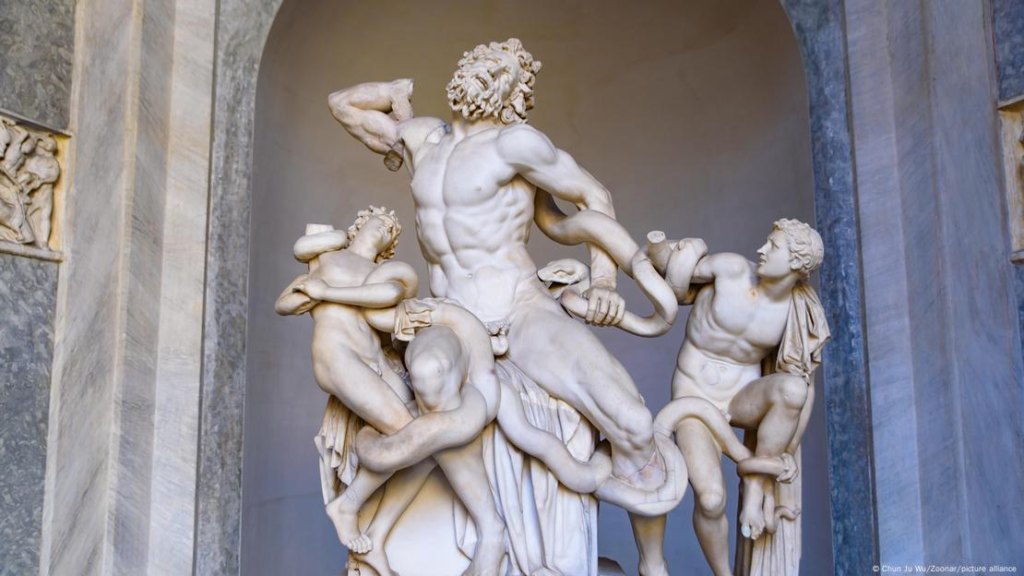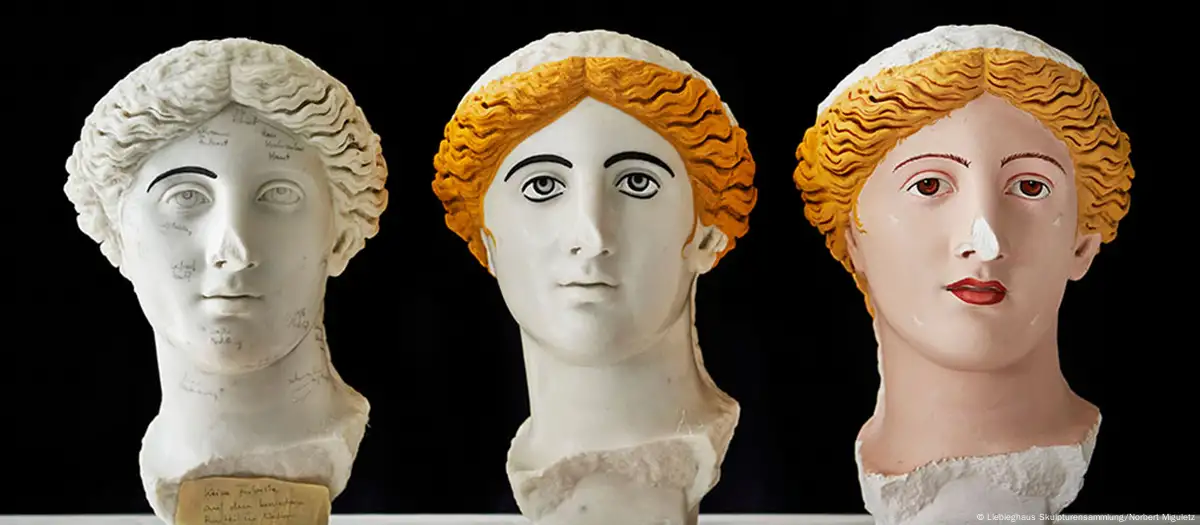The myth that the statues of ancient Greece and Rome were white was created over time and upheld in part to serve racist ideologies. But, in reality, ancient works of art were colorful and even scented.
New discoveries related to works of art in ancient Greece and Rome continue to be unearthed. A Danish study published in the Oxford Journal of Archaeology in March found that statues in antiquity were often perfumed. After examining ancient texts, researchers found references to the use of perfumes and scented oils on the statues of gods and goddesses to make them appear more lifelike.
Roman writer Cicero referenced the treatment of a statue of the Greek goddess Artemis in Sicily, while the poet Callimachus’ description of the statue of Queen Berenice II of Egypt. The study also cited archaeological evidence from the sanctuary of Delos in Greece where perfume workshops were unearthed and inscriptions refer to fragrances and oils used on statues of gods such as Artemis and Hera. According to the researcher who published the study, Cecilie Brons, this is proof that looking at a statue in ancient times was both a visual and olfactory experience.
The study adds to research from the past decade into the art of antiquity that has found that sculptures from ancient Greece and Rome were often painted in warm colors.
New discoveries related to works of art in ancient Greece and Rome continue to be unearthed. A Danish study published in the Oxford Journal of Archaeology in March found that statues in antiquity were often perfumed. After examining ancient texts, researchers found references to the use of perfumes and scented oils on the statues of gods and goddesses to make them appear more lifelike.
Roman writer Cicero referenced the treatment of a statue of the Greek goddess Artemis in Sicily, while the poet Callimachus’ description of the statue of Queen Berenice II of Egypt. The study also cited archaeological evidence from the sanctuary of Delos in Greece where perfume workshops were unearthed and inscriptions refer to fragrances and oils used on statues of gods such as Artemis and Hera. According to the researcher who published the study, Cecilie Brons, this is proof that looking at a statue in ancient times was both a visual and olfactory experience.
The study adds to research from the past decade into the art of antiquity that has found that sculptures from ancient Greece and Rome were often painted in warm colors.
Colorful items covered up
The colors on most ancient statues had faded by the time they were initially excavated, so it was assumed they had always been colorless. But even as new knowledge emerged, the truth was intentionally withheld from the public to fit with the ideals of society, Brinkmann explained.
For example, the statue “Laocoön and his Sons,” found in Rome in 1503, had colors that were “deliberately looked over,” said Brinkmann, adding that the traces of color were often attributed to “barbarians.”

Brinkmann and his wife, archaeologist Ulrike Koch-Brinkmann, created the exhibition “Gods in Color,” which toured the world from 2003 to 2023. It featured more than 100 sculpture replicas painted in bright hues based on ideas of what the originals might have looked like; modern technologies were used to detect traces of color.
White statues of the classical world also fit ideals of the 18th-century Enlightenment period, such as purity and clarity. The lack of color also reduced the sculptures’ sensuality and set them apart from the colorfully decorated artworks that characterized the Ottoman Empire.
As a result, in the 18th and 19th centuries, even as large-scale excavations unearthed sculptures with traces of color on them, the colorful finds did not make it into the realm of public knowledge despite the fact that these observations were often recorded.

Fitting art into ideologies
Some of this myth of whiteness can be attributed to the 18th-century German art historian and archaeologist Johann Winckelmann, often considered the father of art history. According to an article in “The New Yorker” magazine, he supposedly said, “The whiter the body is, the more beautiful it is,” and, “Color contributes to beauty, but it is not beauty.”
Winckelmann was an Enlightenment thinker, and the science-focused Enlightenment period gave rise to modern notions of racism. White statues of antiquity also fed into these views.
“Historically, societies put their own ideologies into how they look at the world,” Nikos Stampolidis, general director of the Acropolis Museum, told DW. “Because most of these statues had lost their colors by the time they were excavated, and because the people of the time were admiring the simplicity of the white color of the marble, and it fit with their ideas of superiority of white people, which harmonized with their beliefs.”
The excavation of Pompeii in the 18th century should have proven that painting statues in the ancient world was common practice. The city was destroyed by a volcanic eruption in 79 A.D., and as a result, many of the statues were preserved with some colors intact, such as a statue of the Greek goddess Artemis. However, according to information published on the “Gods in Color” website, “Unsuitable research methods and diverging understandings of ancient written sources … left room for interpretation and doubt” about whether the statues had been painted.
One of the most famous examples of a statue on which traces of color were found is the “Peplos Kore,” currently in Athens’ Acropolis Museum. It was discovered during large-scale excavations of the Acropolis in the 19th century. Dating back to the Archaic period about 530 B.C., and made of marble from the Greek island of Paros, the figure of a young woman had traces of orange coloring on her locks of hair. Archaeologists saw the traces of paint and described them, but also immediately produced casts from which they made white plaster statues. They then sent these to world fairs, further leading the public to associate the ancient Greek statues with whiteness.

Hitler and the white sculpture
In the 20th century, fascism appropriated the idea of white figures of antiquity as a symbol of white superiority. Both Benito Mussolini and Adolf Hitler particularly praised the art and architecture of ancient Greece and Rome, and the idea of white classical statues was useful in the conceptualization of racial superiority. For the Nazis, this meant aligning the visual image of the mythical Aryan race with Greek statues, for instance by featuring men with finely sculpted torsos.
The wide-ranging colors used in ancient Greek statues are thought to have been related to various categorical concepts — an idea that the Acropolis Museum explored in its exhibition “Archaic Colors.”

Blonde hair, typically featured on Greek Gods, warriors and athletes, symbolized power. A gray skin tone symbolized virtue and bravery, while the white skin of figures of young women “proclaimed grace and glow of youth,” according to the museum’s description.
Color in ancient Greek art was also often likely used to show gender: Men were depicted as having darker skin tones, as they customarily worked outdoors, while women were often painted white, since the ideal was to stay indoors and out of the sun.










